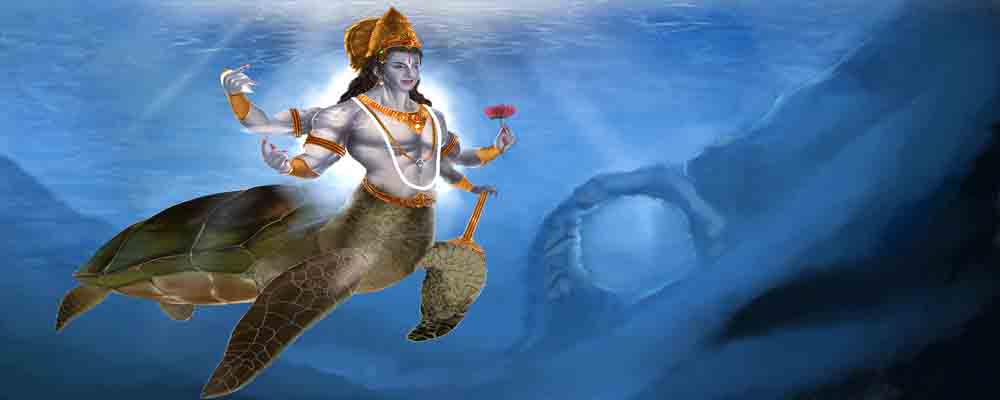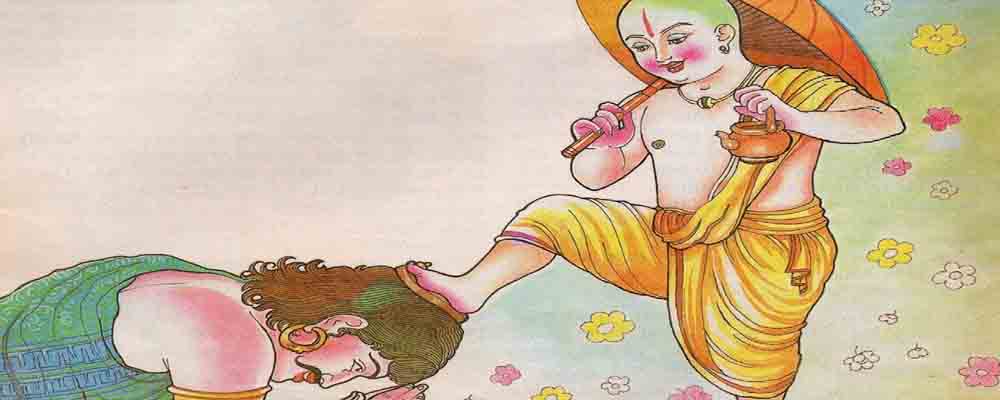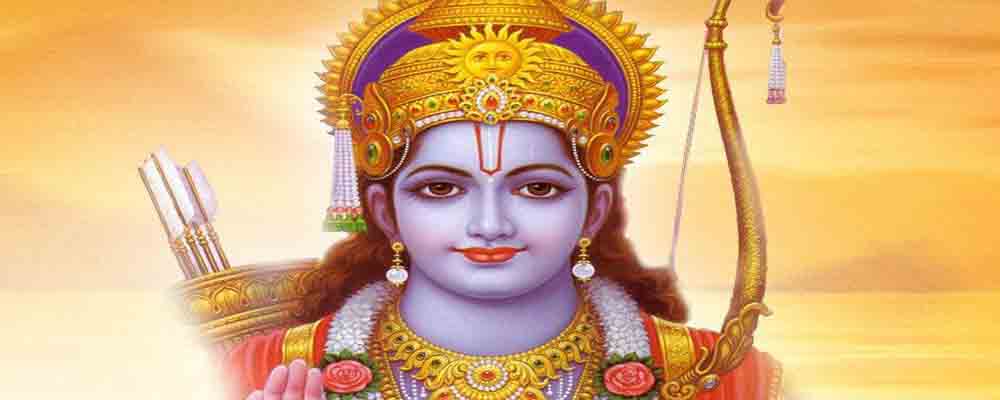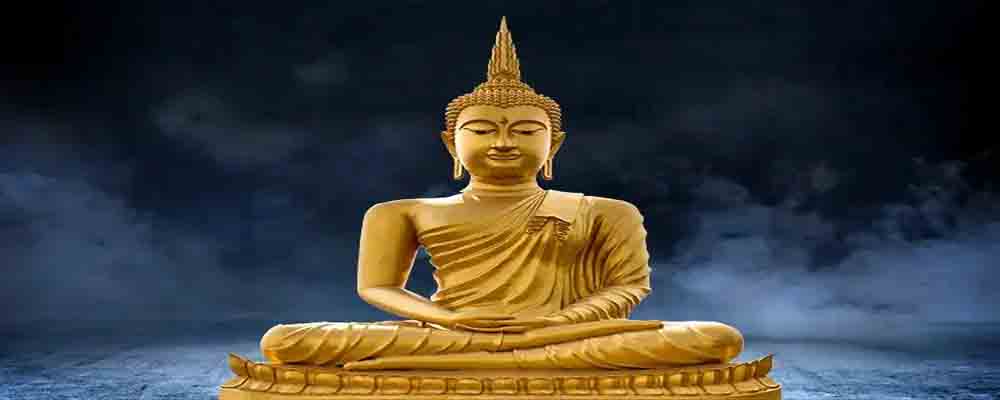The concept of avatars is an integral part of Hindu mythology, and Lord Vishnu is considered to be one of the most important deities in Hinduism. According to Hindu scriptures, Lord Vishnu has taken 10 different avatars or incarnations to protect the world from evil and restore balance. Each of these avatars has a unique story and significance in Hinduism. In this article, we will explore the mystical tales of the 10 avatars of Lord Vishnu and their importance in Hindu mythology.
Matsya Avatar: The Fish Incarnation

Matsya Avatar, also known as the Fish Incarnation, is the first avatar of Lord Vishnu. According to Hindu mythology, Matsya Avatar appeared during the Satya Yuga (the first epoch of the four Yugas) to save the world from a great flood. The demon Hayagriva had stolen the Vedas (sacred Hindu scriptures) from Lord Brahma, and Lord Vishnu appeared as Matsya Avatar to retrieve them and restore knowledge to the world.
Origin and Mythological Significance
The mythological significance of Matsya Avatar lies in its representation of knowledge and preservation. The Vedas contain the essence of Hindu philosophy and culture, and Matsya Avatar’s role in protecting them emphasizes the importance of preserving knowledge and tradition. The avatar is often depicted with a horn on its head and is sometimes shown carrying the Vedas on its back.
Stories of Matsya Avatar in Hindu Scriptures
The stories of Matsya Avatar in Hindu scriptures are varied and often center around its interactions with human beings. In one story, Matsya Avatar meets a king named Satyavrata, who is the only human survivor of the great flood. Matsya Avatar instructs Satyavrata to build a boat and collect seeds of all plant species and pairs of all animals to repopulate the earth after the flood. Matsya Avatar also teaches Satyavrata about the principles of dharma (righteousness) and karma (action).
In another story, Matsya Avatar battles with a demon named Shankha, who is trying to steal the Vedas. Matsya Avatar defeats Shankha and retrieves the Vedas, restoring them to their rightful place.
Kurma Avatar: The Tortoise Incarnation

Kurma Avatar, also known as the Tortoise Incarnation, is the second avatar of Lord Vishnu. According to Hindu mythology, Kurma Avatar appeared during the Samudra Manthan, a cosmic event where the gods and demons churned the ocean in search of the nectar of immortality.
As the churning caused the ocean to become turbulent, the mountain placed on top of it began to sink. To prevent the mountain from sinking, Lord Vishnu appeared as Kurma Avatar, a giant tortoise, and supported the mountain on its back. The Kurma Avatar’s shell served as a stable base for the mountain, allowing the churning to continue.
Mythical Origin of Kurma Avatar
The mythological significance of Kurma Avatar lies in its representation of stability and strength. The avatar’s role in preventing the mountain from sinking represents the importance of maintaining a firm foundation in the face of adversity.
Stories of Kurma Avatar in Hindu Texts
The stories of Kurma Avatar in Hindu texts vary, but most center around the avatar’s involvement in the Samudra Manthan. In one story, Kurma Avatar helps the gods and demons in their search for the nectar of immortality by serving as a pivot for the churning stick.
In another story, after the nectar of immortality is obtained, the demons try to steal it from the gods. Lord Vishnu appears as Mohini, a beautiful woman, to trick the demons and prevent them from obtaining the nectar. The Kurma Avatar is depicted as one of the gods who successfully drinks the nectar and gains immortality.
Varaha Avatar: The Boar Incarnation

Varaha Avatar, also known as the Boar Incarnation, is the third avatar of Lord Vishnu. According to Hindu mythology, Varaha Avatar appeared during the Satya Yuga to rescue the earth goddess, Bhudevi, from the demon Hiranyaksha.
Hiranyaksha had stolen the earth and hidden it in the depths of the cosmic ocean. Lord Vishnu appeared as Varaha Avatar, a giant boar, to dive into the ocean and rescue Bhudevi. After a fierce battle, Varaha Avatar defeated Hiranyaksha and lifted the earth back to its rightful place.
Mythology Behind Varaha Avatar
The mythological significance of Varaha Avatar lies in its representation of power and protection. The avatar’s role in rescuing Bhudevi and restoring the earth to its proper place highlights the importance of preserving the natural balance of the world.
Significance of Varaha Avatar in Hinduism
The stories of Varaha Avatar in Hinduism vary, but most focus on the avatar’s battle with Hiranyaksha. In some stories, Hiranyaksha is depicted as a powerful demon who is difficult to defeat. In others, Varaha Avatar is shown as a fierce and determined warrior who never gives up in the face of adversity.
The significance of Varaha Avatar in Hinduism is also tied to the concept of dharma, or righteousness. The avatar’s battle with Hiranyaksha represents the struggle between good and evil, and Varaha Avatar’s victory over the demon symbolizes the triumph of dharma over adharma, or unrighteousness.
Narasimha Avatar: The Man-Lion Incarnation

Narasimha Avatar, also known as the Man-Lion Incarnation, is the fourth avatar of Lord Vishnu. According to Hindu mythology, Narasimha Avatar appeared during the Satya Yuga to defeat the demon king, Hiranyakashipu.
Hiranyakashipu had gained a boon from Lord Brahma, which made him virtually indestructible. He began to terrorize the earth and the gods, and no one was able to stop him. Lord Vishnu appeared as Narasimha Avatar, a half-man, half-lion creature, to defeat Hiranyakashipu and restore balance to the world.
Origin and Significance of Narasimha Avatar
The significance of Narasimha Avatar lies in its representation of the triumph of good over evil. The avatar’s battle with Hiranyakashipu represents the struggle between righteousness and unrighteousness. The avatar’s depiction as a man-lion also represents the merging of two opposing forces, symbolizing the balance and unity necessary for maintaining order in the world.
Stories of Narasimha Avatar in Hindu Scriptures
The stories of Narasimha Avatar in Hindu scriptures vary, but most focus on the avatar’s battle with Hiranyakashipu. In some stories, Hiranyakashipu is depicted as a powerful demon who is difficult to defeat. In others, Narasimha Avatar is shown as a fierce and unstoppable warrior who is determined to restore balance to the world.
One of the most famous stories of Narasimha Avatar is the story of Prahlada, Hiranyakashipu’s son. Prahlada was a devout follower of Lord Vishnu, which enraged Hiranyakashipu. He ordered Prahlada to renounce Vishnu and worship him instead. When Prahlada refused, Hiranyakashipu tried to kill him. Lord Vishnu appeared as Narasimha Avatar to protect Prahlada and defeat Hiranyakashipu.
Vamana Avatar: The Dwarf Incarnation

Vamana Avatar, also known as the Dwarf Incarnation, is the fifth avatar of Lord Vishnu. According to Hindu mythology, Vamana Avatar appeared during the Treta Yuga to restore the balance between the gods and demons.
The story goes that Bali, the demon king, had become very powerful and was threatening the gods. To stop Bali, Lord Vishnu appeared as Vamana Avatar, a dwarf Brahmin, and approached Bali to request land equal to three steps of his small feet. Bali agreed, but Vamana Avatar suddenly grew in size and covered the entire universe in his first two steps. For his third step, he asked Bali where to place his foot, and Bali offered his head. Vamana Avatar then pushed Bali into the underworld, restoring balance to the universe.
Mythological Origin and Significance of Vamana Avatar
The significance of Vamana Avatar lies in its representation of humility, sacrifice, and balance. The avatar’s depiction as a small, unassuming dwarf Brahmin highlights the importance of humility in achieving greatness. The avatar’s sacrifice in the form of covering the entire universe with his first two steps and then accepting Bali’s head for his third step represents the ultimate sacrifice for the greater good. The restoration of balance to the universe through the defeat of Bali also emphasizes the importance of maintaining balance and harmony in the world.
Stories of Vamana Avatar in Hindu Mythology
The stories of Vamana Avatar in Hindu mythology vary, but most focus on the avatar’s battle with Bali. In some stories, Bali is depicted as a powerful demon who is difficult to defeat. In others, Vamana Avatar is shown as a cunning and strategic warrior who is determined to restore balance to the universe.
One of the most famous stories of Vamana Avatar is the story of King Mahabali. King Mahabali was a virtuous and generous king who was beloved by his people. However, his growing power and influence began to threaten the gods. Lord Vishnu appeared as Vamana Avatar to stop Mahabali and restore balance to the universe.
Parashurama Avatar: The Warrior Sage Incarnation

Parashurama Avatar is the sixth avatar of Lord Vishnu, who was born as a warrior sage to bring peace to the world. According to Hindu mythology, Parashurama Avatar appeared during the Treta Yuga and was known for his great skill in warfare and his devotion to Lord Vishnu.
The story goes that Parashurama was born to a sage named Jamadagni and his wife Renuka. Jamadagni was a great sage and had received a divine axe from Lord Shiva, which he passed on to his son Parashurama. Parashurama became a fierce warrior and used his divine axe to fight against evil and uphold righteousness.
Legend and Significance of Parashurama Avatar
The significance of Parashurama Avatar lies in his representation of the ideal of a warrior sage. He was known for his bravery and skill in warfare, but also for his devotion to Lord Vishnu and his commitment to the path of righteousness. Parashurama’s teachings and values have had a lasting impact on Hindu culture and philosophy.
Stories of Parashurama Avatar in Hindu Mythology
The stories of Parashurama Avatar in Hindu mythology are varied, but many focus on his battles against evil forces and his role in upholding righteousness. One of the most famous stories involves his conflict with King Kartavirya Arjuna. The king, who had become arrogant and unjust, stole Jamadagni’s divine cow and refused to return it. Parashurama fought against the king and his army, using his divine axe to defeat them and restore the cow to its rightful owner.
Another famous story involves Parashurama’s role in helping the warrior prince Rama defeat the demon king Ravana. Parashurama trained Rama in the use of weapons and provided him with the divine bow of Lord Shiva, which Rama used to defeat Ravana.
Lord Rama: The Perfect King Incarnation

Lord Rama is the seventh incarnation of Lord Vishnu and is one of the most widely worshipped deities in Hinduism. He is revered for his qualities of righteousness, compassion, and bravery, and is considered the ideal king and a model of virtuous behavior.
The mythology surrounding Lord Rama is vast and intricate. According to Hindu texts, Lord Rama was born to King Dasharatha and Queen Kausalya in Ayodhya. His birth was celebrated with great joy as it was believed that he was the embodiment of Lord Vishnu himself. Lord Rama is known for his unwavering devotion to his duty and his commitment to upholding dharma, or righteousness.
Mythology and Significance of Lord Rama
The significance of Lord Rama lies in his representation of the ideal king. He is considered the epitome of virtuous behavior, and his life serves as a model for how one should conduct oneself as a ruler. Lord Rama is revered for his sense of justice, his compassion for all beings, and his commitment to the well-being of his subjects.
Stories of Lord Rama in Hindu Epics
The stories of Lord Rama are immortalized in the Hindu epic, Ramayana. The epic follows Lord Rama’s life from his birth to his eventual victory over the demon king Ravana, who had kidnapped Lord Rama’s wife, Sita. The epic is filled with tales of Lord Rama’s bravery, his unwavering devotion to his duty, and his compassion for all beings.
One of the most famous stories of Lord Rama involves his exile to the forest with his wife Sita and his brother Lakshmana. Lord Rama willingly left the comforts of the palace to uphold his father’s promise to his stepmother, Kaikeyi. During their time in the forest, Sita was kidnapped by Ravana, and Lord Rama waged war against Ravana to rescue her.
Another famous story involves Lord Rama’s defeat of the demon king Ravana. Ravana was a powerful demon who had gained immense power through his devotion to Lord Shiva. Lord Rama, with the help of his army of monkeys, waged a long and difficult war against Ravana, eventually emerging victorious and rescuing Sita.
Lord Krishna: The Divine Enchanter Incarnation

Lord Krishna is the eighth incarnation of Lord Vishnu and is one of the most beloved and revered deities in Hinduism. He is known for his charming personality, his love for his devotees, and his teachings on spirituality and morality.
According to Hindu mythology, Lord Krishna was born to King Vasudeva and Queen Devaki in Mathura. His birth was shrouded in mystery, as his uncle Kamsa had heard a prophecy that he would be killed by his sister’s eighth child. Kamsa imprisoned Devaki and Vasudeva, but Lord Krishna was eventually born and secretly taken to safety in the nearby village of Vrindavan.
Mythology and Significance of Lord Krishna
The significance of Lord Krishna lies in his teachings on spirituality and morality. He is revered as a teacher and a guide, and his teachings on the Bhagavad Gita are considered a cornerstone of Hindu philosophy. Lord Krishna’s teachings emphasize the importance of devotion to God, the pursuit of righteousness, and the need to act selflessly in the world.
Stories of Lord Krishna in Hindu Scriptures
The stories of Lord Krishna are told in many Hindu scriptures, including the Mahabharata, the Bhagavata Purana, and the Harivamsa. One of the most famous stories involves Lord Krishna’s childhood in Vrindavan, where he was known for his mischievous antics and his love for his devotees.
Another famous story involves Lord Krishna’s role in the Mahabharata, where he serves as a guide and mentor to the warrior Arjuna. Lord Krishna teaches Arjuna about the importance of duty, the impermanence of the world, and the need to act without attachment to the fruits of one’s actions.
Lord Krishna is also known for his love for his devotees, particularly the cowherd girls of Vrindavan, who are known as the gopis. Lord Krishna’s interactions with the gopis are celebrated in many Hindu festivals, including the famous festival of Holi.
Buddha Avatar: The Compassionate Incarnation

Buddha Avatar is a unique incarnation of Lord Vishnu, as he was not born as a Hindu deity, but as a prince in Nepal. The story of Buddha Avatar is rooted in the Hindu concept of dharma, which emphasizes the pursuit of righteousness and the need to alleviate suffering in the world.
Buddha’s teachings emphasize the Four Noble Truths, which state that suffering exists, that suffering arises from attachment and desire, that suffering can be overcome, and that the path to overcoming suffering is through the Eightfold Path. Buddha’s teachings also emphasize the importance of compassion and the need to treat all beings with kindness and respect.
Explanation and Importance of Buddha Avatar in Hinduism
The importance of Buddha Avatar in Hinduism lies in its role as a bridge between Hinduism and Buddhism. While Buddha is not considered a Hindu deity, his teachings are deeply intertwined with Hindu philosophy and have had a profound impact on the development of Hinduism over the centuries.
Comparison Between Buddha’s Teachings and Hinduism
Buddha’s teachings on the Four Noble Truths and the Eightfold Path have many similarities to the teachings of Hinduism, particularly the teachings of the Upanishads and the Bhagavad Gita. Both Hinduism and Buddhism emphasize the importance of detachment from material desires and the pursuit of spiritual enlightenment.
However, there are also key differences between Buddha’s teachings and Hinduism. While Hinduism emphasizes the pursuit of God and the attainment of moksha or liberation from the cycle of birth and death, Buddhism emphasizes the attainment of nirvana, which is a state of complete freedom from suffering and desire.
Kalki Avatar: The Savior Incarnation

Kalki Avatar is the tenth and final incarnation of Lord Vishnu, who is believed to appear at the end of the Kali Yuga or the current age of darkness and chaos. Kalki Avatar is said to be a savior who will come to restore order and righteousness to the world.
According to Hindu mythology, Kalki Avatar will be born in a Brahmin family, in the village of Sambhala. He will possess immense knowledge and wisdom and will have a divine mission to rid the world of evil and restore righteousness. Kalki Avatar will ride a white horse with a blazing sword in his hand, and will lead a divine army into battle against the forces of darkness.
Mythology and Significance of Kalki Avatar
The significance of Kalki Avatar in Hinduism lies in its role as a symbol of hope and salvation. In the current age of darkness and chaos, Kalki Avatar represents the possibility of a better future, where righteousness and justice will prevail. The arrival of Kalki Avatar is seen as a necessary step in the cycle of creation and destruction that characterizes Hindu cosmology.
Prophecies about Kalki Avatar in Hindu scriptures
The prophecies about Kalki Avatar are found in various Hindu scriptures, including the Vishnu Purana and the Bhagavata Purana. According to these prophecies, Kalki Avatar will come at a time when the world is steeped in darkness and sin. He will be a powerful warrior who will defeat the forces of evil and establish a new era of peace and prosperity.
Some scholars believe that the prophecies about Kalki Avatar are a metaphor for the struggle between good and evil that takes place within every individual. In this interpretation, Kalki Avatar represents the higher self or the divine spark within each person, which has the power to overcome darkness and ignorance.
Conclusion
The 10 avatars of Lord Vishnu hold great significance in Hinduism, as they represent the cycle of creation, preservation, and destruction that characterizes Hindu cosmology. Each avatar has its own unique characteristics and symbolizes different aspects of the divine.
The avatars also serve as a source of inspiration and guidance for Hindus, as the stories of their struggles and triumphs teach important moral lessons and provide a framework for ethical behavior.
Understanding Hindu mythology and scriptures is crucial for anyone seeking to appreciate the depth and richness of Hindu culture and spirituality. The stories and teachings contained in these texts offer insights into the nature of the divine and the human experience, and provide a guide for living a meaningful and fulfilling life.
By exploring the myths and legends of the 10 avatars of Lord Vishnu, we can gain a deeper understanding of the complex and multifaceted nature of the divine, and draw inspiration from their heroic deeds and divine qualities.
In conclusion, the 10 avatars of Lord Vishnu play a vital role in Hinduism, serving as symbols of divine power, sources of moral guidance, and inspiration for spiritual growth. Through a study of Hindu mythology and scriptures, we can deepen our appreciation for the richness and complexity of Hindu culture and spirituality, and gain insights into the nature of the divine and the human experience.
Frequently Asked Questions
Who is the 10th avatar of Vishnu?
The 10th and final avatar of Lord Vishnu is Kalki, who is said to appear at the end of the current age to rid the world of evil and restore righteousness.
Who was the 9th avatar of Lord Vishnu?
The 9th avatar of Lord Vishnu was Lord Buddha, who is revered in Hinduism as an incarnation of the divine and a great spiritual teacher.
Is Buddha the 9th avatar of Vishnu?
Yes, Lord Buddha is considered to be the 9th avatar of Lord Vishnu in Hinduism, although this belief is not universal among Hindus.
What is the 20th avatar of Vishnu?
There is no 20th avatar of Lord Vishnu mentioned in Hindu scriptures. The commonly accepted number of avatars is 10, although some traditions recognize additional avatars.
Are there 10 or 24 avatars of Vishnu?
The commonly accepted number of avatars of Lord Vishnu in Hinduism is 10, although some traditions recognize additional avatars. The idea of 24 avatars is not a widely accepted belief in Hinduism.
Who is the 1st avatar of Vishnu?
The 1st avatar of Lord Vishnu is Matsya, the fish incarnation, who is said to have saved the world from a great flood.
